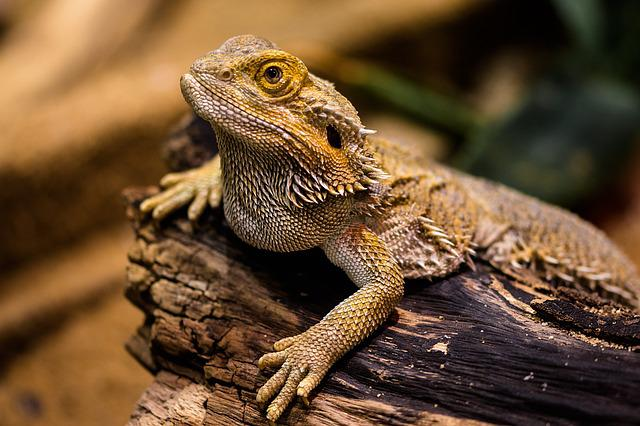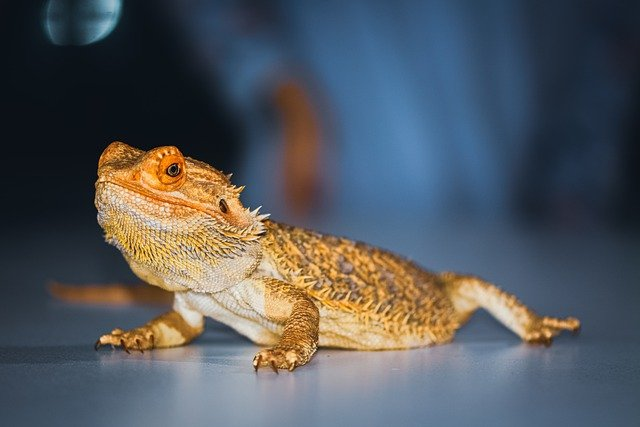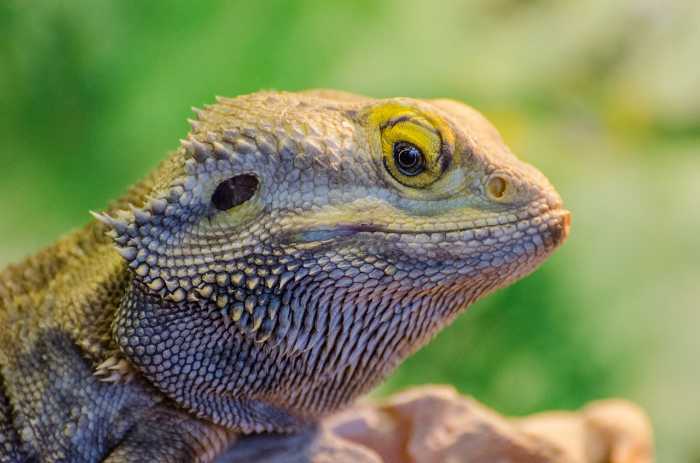Do you ever wonder why does my bearded dragon sleep standing up? It’s a pretty strange sight, but there is actually a good reason why they do it! In this blog post, we will discuss the reasons why bearded dragons sleep standing up, and what you can do to make sure they get enough rest.
Why Does My Bearded Dragon Sleep Standing Up?

Bearded dragons are lizards that are native to Australia. One of the most common questions that people have about them is why they sleep standing up. The answer has to do with their physiology and their behavior in the wild which is their natural habitat. When most people think of Sleeping Dragons, they picture the mythical creatures curled up on a bed of treasure. But in reality, many lizards – including bearded dragons – often sleep standing up. So, why does my bearded dragon sleep standing up? There are a few reasons why your bearded dragon might prefer to catch some Zs on its feet:
- Sleeping upright helps them stay alert and aware of their surroundings. In the wild, sleeping on the ground makes them vulnerable to predators – so standing up gives them a better chance of spotting danger and making a quick getaway.
- Bearded dragons are ectothermic, which means that they rely on external sources of heat to regulate their body temperature. In the wild, they bask in the sun to raise their body temperature. When they are ready to sleep, they find a place where they can bask in the sun and remain warm. By sleeping standing up, they can quickly move into a basking position if the temperature drops.
- By sleeping upright, they can keep an eye on their surroundings and be alert for predators. In captivity, bearded dragons can continue to sleep in an upright position, or they can choose to sleep on the ground. The important thing is that they have a warm basking spot available so that they can regulate their body temperature.
- If your bearded dragon is standing up and swaying back and forth, it could be a sign that they’re dizzy or unsteady on its feet. This could be caused by an inner ear infection or some other health problem. If you think your bearded dragon might be sick, it’s best to take them to the vet for a check-up.
- Sleeping upright helps them stay cool; since reptiles are cold-blooded, they rely on external sources of heat to regulate their body temperature. Sleeping upright allows them to take advantage of solar basking – another way to regulate their body temperature by soaking up some rays.
So there you have it! Now you know why your bearded dragon sleeps standing up. While it may look strange (and a little bit uncomfortable), this position has some important benefits for your pet lizard.
What To Do Should Your Bearded Dragon Fall Asleep Standing Up?

There are a few things to keep in mind if your bearded dragon sleeps standing up. First, make sure that there is nothing nearby that could fall on them and injure them. Second, provide them with a warm basking spot so that they can thermoregulate their body temperature. Lastly, do not disturb them while they are sleeping as this can disrupt their sleep cycle. If you have any concerns, consult with a reptile veterinarian.
What Other Sleeping Habits Do Bearded Dragons Have?
Sleep is important for all animals, including reptiles like bearded dragons. Sleep helps the body to rest and heal, and it is essential for proper growth and development. While we may think of sleep as a time when the body is completely at rest, this is not always the case. Some animals, including bearded dragons, sleep while standing up. Many bearded dragon owners are surprised to find their dragons sleeping belly-pressed against a branch or rock. It’s not uncommon to see a bearded dragon standing on two legs, with its head resting on its arm, seemingly taking a nap.
When a bearded dragon is basking in the heat, it often stands on all fours with its belly pressed against a warm surface. However, when it’s time to sleep, this reptile takes a different posture. Instead of lying down, a bearded dragon will often stand on its hind legs with its head and tail raised. While this may seem like an odd way to sleep, there are several benefits to this posture. For one thing, it helps the bearded dragon to stay warm. By keeping its belly off the ground, the reptile can prevent heat from escaping through the ground. Additionally, this sleeping position helps the bearded dragon to stay alert and aware of its surroundings. By sleeping standing up, the reptile can be ready to defend itself or escape danger at a moment’s notice. Finally, this posture also helps the bearded dragon to stay hydrated. By keeping its head and tail up, the reptile can prevent moisture from evaporating from its body. As a result, sleeping and standing up is a very beneficial behavior for bearded dragons.
Do Bearded Dragons Engage In Glass Surfing Behaviour?
Glass surfing is a common behavior among captive bearded dragons. It gets its name from the dragons’ habit of running across the glass of their tanks and appearing to surf on the surface of the water. Glass surfing is often mistaken for a sign of stress or illness, but it is perfectly normal behavior. Glass surfing is usually seen in a baby bearded dragon who is still getting used to its surroundings. As they become more comfortable with their tanks, they will typically stop glass surfing. In some cases, however, most bearded dragons may continue to glass surf even into adulthood. While there is no definitive answer as to why some dragons glass surf and others do not, it is thought that it may be due to boredom or curiosity. Glass surfing is generally harmless, but it can be dangerous if a dragon tries to jump out of its tank. If you notice your dragon glass surfing, make sure to provide it with plenty of enrichment items such as toys and hiding places to help keep it amused and prevent it from getting bored.
Conclusion
Whatever the reason, it is clear that sleeping while standing up is perfectly normal for bearded dragons. If you notice your bearded dragon doing this, there is no need to worry. Just make sure that they have a comfortable place to rest and that they are not too close to any potential dangers like predators or hazards.

